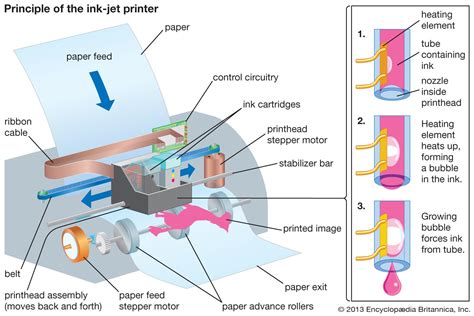The world of printing has undergone significant transformations over the years, and one of the most notable advancements is the development of inkjet technology. Inkjet printing has revolutionized the way we print, offering faster, more efficient, and higher-quality results. In this article, we'll explore five ways inkjet tech is transforming the printing industry.
Printing has come a long way since the days of traditional printing methods, such as offset printing and screen printing. With the advent of inkjet technology, printing has become more accessible, affordable, and environmentally friendly. Inkjet printing uses a series of tiny nozzles to spray ink onto a substrate, creating a high-quality image. This technology has opened up new possibilities for various industries, including textiles, ceramics, and paper printing.
From rapid prototyping to personalized products, inkjet tech is changing the face of printing. Let's dive into the top five ways inkjet technology is revolutionizing printing.
The Evolution of Inkjet Printing
Before we dive into the five ways inkjet tech is revolutionizing printing, let's take a brief look at its evolution. Inkjet printing has been around since the 1950s, but it wasn't until the 1980s that the first commercial inkjet printers were introduced. Since then, inkjet technology has undergone significant advancements, with the development of new printheads, inks, and printing systems.
Today, inkjet printing is used in various industries, including textiles, ceramics, and paper printing. The technology has improved significantly, offering faster printing speeds, higher quality, and increased efficiency.

1. Rapid Prototyping and Product Development
One of the most significant advantages of inkjet printing is its ability to produce rapid prototypes and product samples. With traditional printing methods, producing a prototype can take weeks or even months. However, with inkjet printing, designers and manufacturers can create a prototype in a matter of hours.
Inkjet printing allows for rapid prototyping and product development, enabling designers to test and refine their designs quickly. This reduces the time and cost associated with traditional prototyping methods, making it an ideal solution for industries that require rapid product development.

2. Personalized Products and Variable Data Printing
Inkjet printing also enables the production of personalized products with variable data printing (VDP). VDP allows for the creation of customized products with unique text, images, and designs. This technology has opened up new possibilities for industries such as packaging, labels, and direct mail.
With inkjet printing, businesses can create personalized products that cater to individual customers' needs and preferences. This has led to increased customer engagement and loyalty, as well as improved brand recognition.

3. Sustainable and Environmentally Friendly Printing
Inkjet printing is also more environmentally friendly compared to traditional printing methods. Inkjet printers use significantly less ink and energy, reducing waste and minimizing the carbon footprint.
Additionally, inkjet printing allows for the use of eco-friendly inks and substrates, making it an ideal solution for businesses that prioritize sustainability. This has led to increased adoption of inkjet printing in industries such as textiles and ceramics.

4. High-Quality Printing and Finishing
Inkjet printing offers high-quality printing and finishing capabilities, making it an ideal solution for industries that require precise and detailed prints. With inkjet printing, businesses can create high-quality prints with fine details and vibrant colors.
Inkjet printing also allows for various finishing options, such as cutting, folding, and binding. This enables businesses to create a wide range of products, from brochures and flyers to labels and packaging.

5. Increased Efficiency and Productivity
Finally, inkjet printing offers increased efficiency and productivity compared to traditional printing methods. Inkjet printers are faster and more reliable, reducing downtime and increasing overall productivity.
With inkjet printing, businesses can produce high-quality prints quickly and efficiently, making it an ideal solution for industries that require rapid turnaround times.







In conclusion, inkjet technology is revolutionizing the printing industry in various ways. From rapid prototyping and product development to personalized products and sustainable printing, inkjet tech is offering new possibilities for businesses and industries.
Whether you're a designer, manufacturer, or business owner, inkjet printing can help you achieve your goals and stay ahead of the competition. With its high-quality prints, increased efficiency, and environmentally friendly capabilities, inkjet printing is an ideal solution for various industries.
We hope this article has provided you with a comprehensive understanding of the benefits and applications of inkjet printing. If you have any questions or comments, please feel free to share them with us.
What is inkjet printing?
+Inkjet printing is a type of printing technology that uses a series of tiny nozzles to spray ink onto a substrate, creating a high-quality image.
What are the benefits of inkjet printing?
+Inkjet printing offers several benefits, including high-quality prints, increased efficiency, and environmentally friendly capabilities.
What are some common applications of inkjet printing?
+Inkjet printing is commonly used in various industries, including textiles, ceramics, and paper printing.
